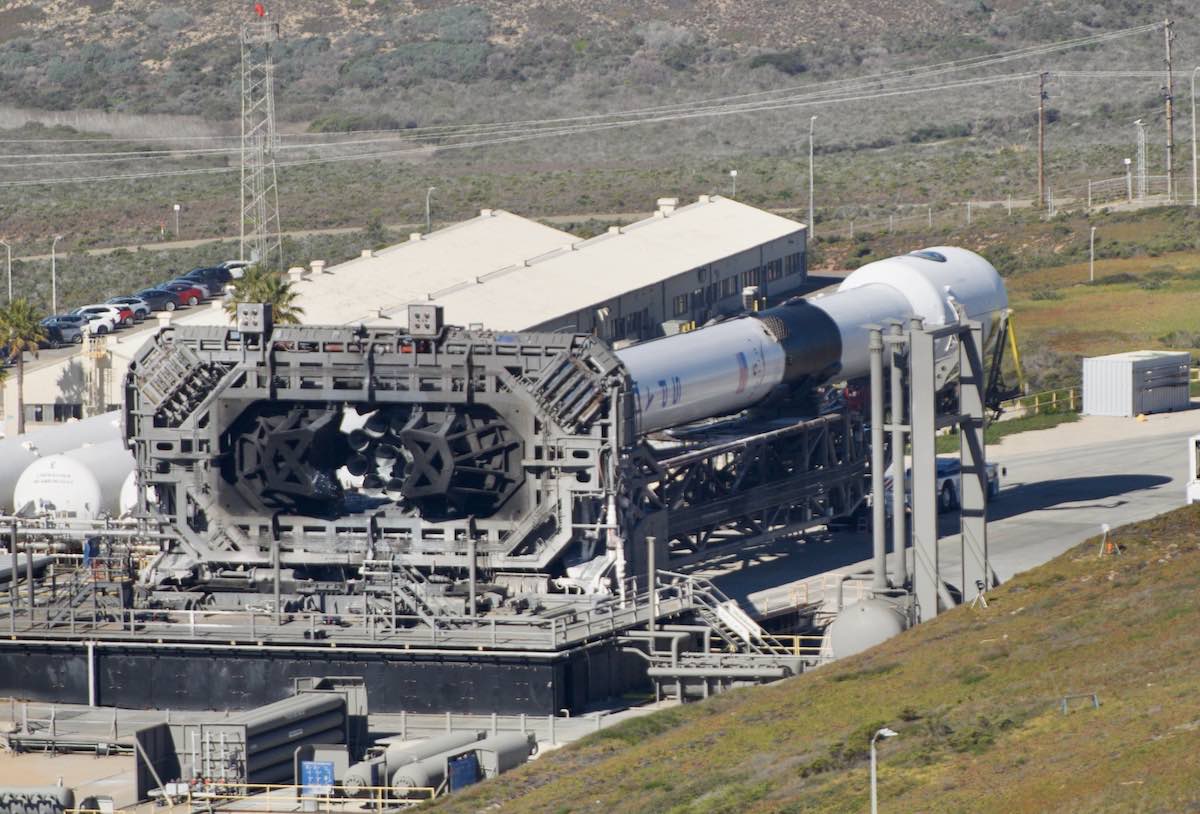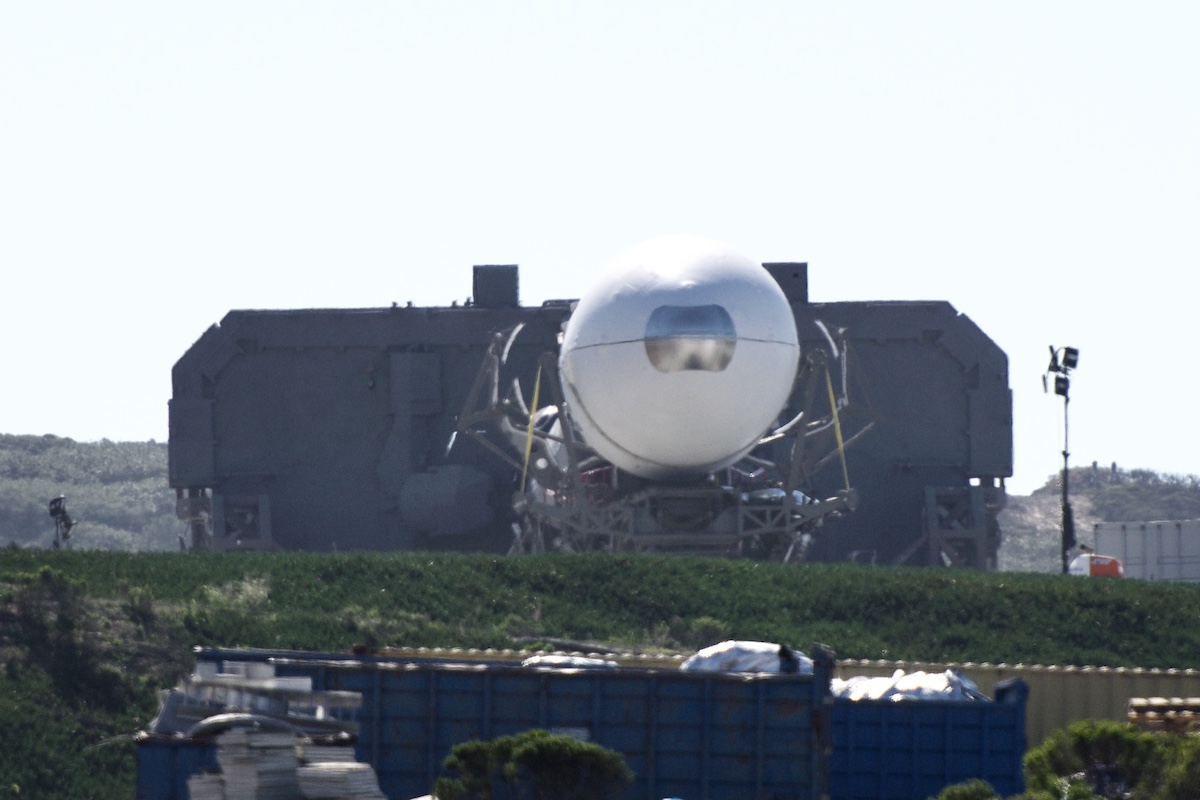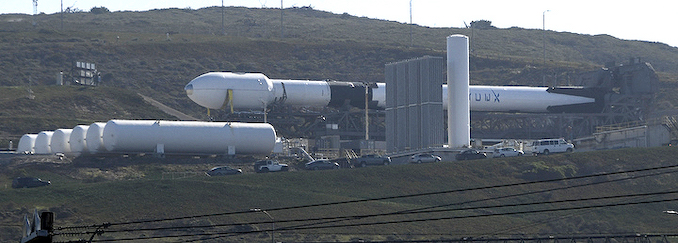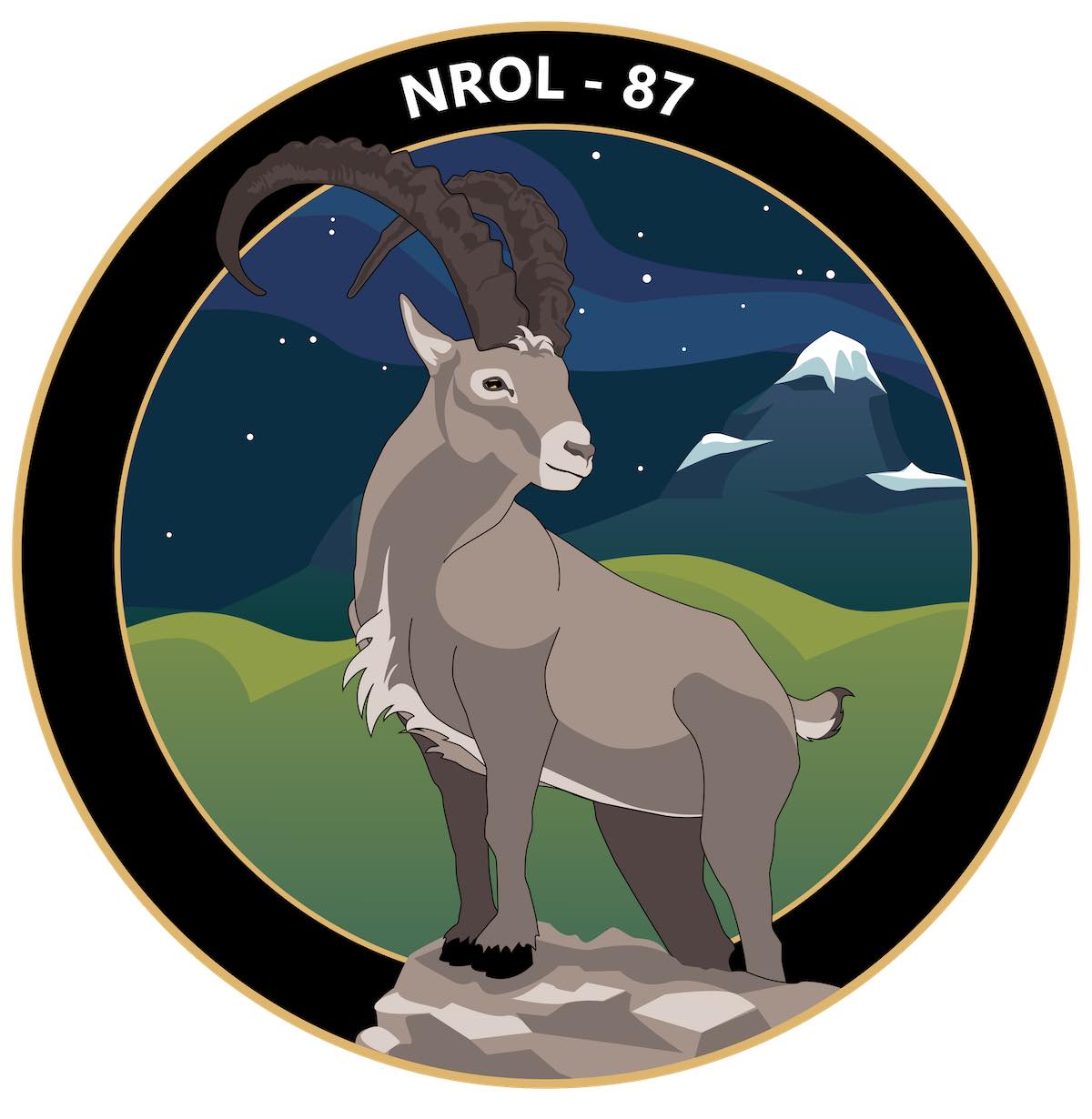
A classified payload for the National Reconnaissance Office is closed up in the nose cone of a SpaceX Falcon 9 rocket for liftoff Wednesday from California’s Central Coast, debuting a brand new booster that will land back near the launch site for reuse on another national security mission later this year.
Liftoff of the 229-foot-tall (70-meter) set for 12:18 p.m. PST (3:18 p.m. EST; 2018 GMT) from Space Launch Complex 4-East at Vandenberg Space Force Base, marking SpaceX’s fifth launch of the year.
The mission for the U.S. government’s spy satellite agency will aim to place its payload into a north-south polar orbit about 318 miles (512 kilometers) above Earth. But little more is publicly known about the spacecraft set to ride SpaceX’s Falcon 9 rocket into orbit from Vandenberg.
“I cannot provide, unfortunately, really any details whatsoever (publicly), which is really frustrating to me in one regard because then I’m not able to accurately communicate the kind of capability this is going to deliver on orbit,” said Col. Chad Davis, director of the NRO’s office of space launch.
Generally, Davis said, the NRO puts “capabilities on orbit to save lives.”
“It’s our U.S. and allied forces in the field that are using these kind of capabilities in a daily basis,” Davis said. “So support the fight on the ground, as it were, bring them home safe, and deliver our national policymakers the most detailed information that’s possible so they can make smart decisions. It’s that kind of a capability set that this mission is going to fall into.”
The NRO manages a fleet of intelligence-gathering satellites, capturing super-sharp optical and radar imagery around the world. The agency also has spacecraft tracking foreign naval deployments, eavesdropping on communications by adversaries, and relaying surveillance images between spy satellites and intelligence analysts on the ground.

The mission set for launch this week is codenamed NROL-87. It’s the third SpaceX mission for the NRO, and the first NRO mission booked with SpaceX through the U.S. Space Force’s National Security Space Launch program, which oversees launch services for the military’s most expensive and most critical satellites.
The NRO booked two previous missions on Falcon 9 rockets that launched from Florida in 2017 and 2020 through lower-cost commercial contract arrangements, eschewing the close oversight of the military.
The NROL-87 mission returns to the established formula for the NRO’s numerous missions that have flown on United Launch Alliance Atlas and Delta rockets.
But there’s a key difference with the Falcon 9 launch from California this week. Unlike the expendable, single-use Atlas and Delta rockets, the Falcon 9 is powered by a reusable first stage booster.
The Falcon 9’s first stage will return to Vandenberg’s Landing Zone 4, located just west of the SpaceX launch pad, for a vertical landing about eight minutes after takeoff. Local residents will hear double sonic booms as the nearly 16-story rocket returns for landing.

The second stage of the Falcon 9 rocket will power the NROL-87 payload into orbit. The launcher’s payload shroud will jettison a few minutes into the mission, and a SpaceX recovery team downrange in the Pacific Ocean will pluck the fairing halves from the sea after they descend under parachutes.
The booster flying the NROL-87 mission, designated B1071 in SpaceX’s fleet, is fresh from the factory, and is set to launch on its first trip to space. The first stage will be reused on another NRO mission later this year, according to an NRO spokesperson.
SpaceX and ULA won National Security Space Launch Phase 2 contracts awarded by the U.S. Space Force in 2020, ending a long-running competition for deals to launch the military’s most critical and expensive space missions, beating out proposals from Northrop Grumman and Blue Origin.
The Space Force will order Phase 2 missions from ULA and SpaceX through late 2024 for launches that could occur though late 2027.
ULA, a 50-50 joint venture formed in 2006 by Boeing and Lockheed Martin, will get 60 percent of the National Security Space Launch contracts for missions that time period. SpaceX will receive 40 percent.
The NROL-87 mission was awarded to SpaceX in 2019, before the Space Force announced the Phase 2 contracts.
Procurement documents released before SpaceX’s selection as the launch provider indicated the NROL-87 mission would deploy its cargo into an orbit about 318 miles above Earth, with an inclination of 97.4 degrees to the equator.
The orbital parameters suggest the payload may be part of a new generation of optical NRO surveillance satellites. Davis, head of the NRO’s launch program, confirmed in a pre-launch media telecon that the NROL-87 mission will carry a “single payload” into orbit.
The Falcon 9 rocket will have enough reserved propellant to return to Vandenberg for landing, indicating that the NRO payload is relatively lightweight.

As launch schedules currently stand, Davis said the NRO has seven launches planned in an eight-month period, beginning with the NROL-87 mission this week.
“We’re looking at something like a half dozen for the calendar year, deploying 12 payloads,” Davis said. “If I take snapshot today, that number is seven launches in eight months, as it sits today, from three different continents.”
Davis didn’t specify mission numbers or launch providers for the remaining NRO launches this year, but two of the remaining six missions are believed to be part of the National Security Space Launch program — the NROL-85 launch on another SpaceX Falcon 9 rocket, and the NROL-91 mission on a ULA Delta 4-Heavy rocket.
Last year, the NRO said it had reserved two missions for launch on Rocket Lab Electron launch vehicles from New Zealand. Those two launches — NROL-162 and NROL-199 — likely account for two more missions later this year.
Davis also didn’t identify the third continent that will host an NRO mission in 2022. One possibility might be a planned launch by Virgin Orbit, a U.S.-based company, of its small air-launched rocket off the coast of England this summer.
The launch of the NROL-87 mission from Vandenberg, located on the Pacific coastline between Los Angeles and San Francisco, comes amid a busy stretch of missions on SpaceX’s schedule.
SpaceX launched a Falcon 9 rocket from Cape Canaveral Space Force Station on Monday evening with an Italian radar remote sensing satellite. Another Falcon 9 rocket loaded with a group of Starlink internet satellites is standing on pad 39A at NASA’s Kennedy Space Center for a launch opportunity at 4:51 p.m. EST (2151 GMT) Wednesday, just 93 minutes after SpaceX plans to launch from Vandenberg.
Email the author.
Follow Stephen Clark on Twitter: @StephenClark1.
